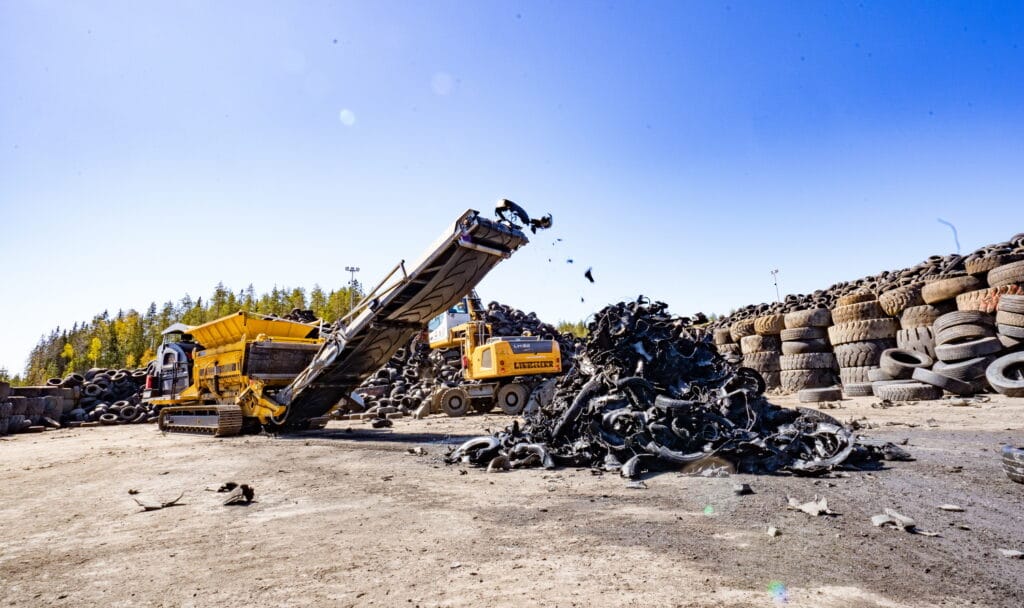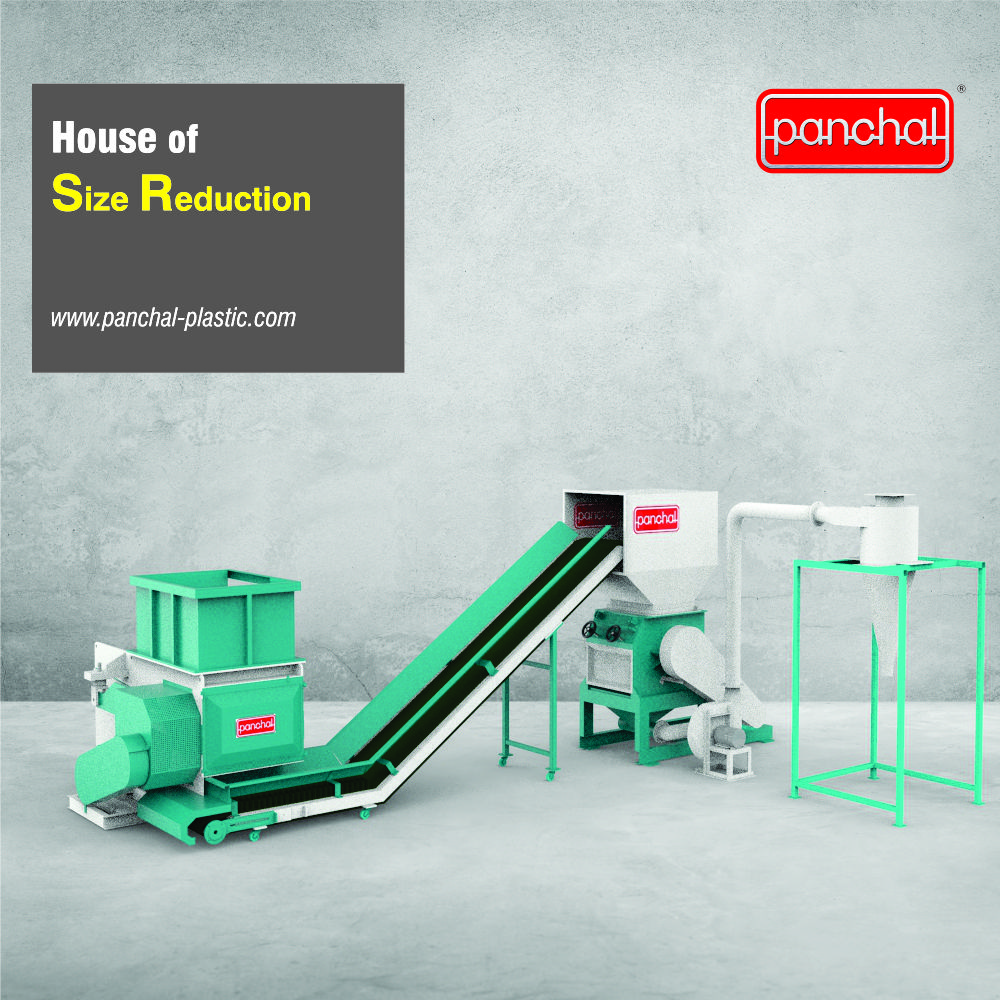Shredding end of life tires in one pass
End-of-life tyres for cars, trucks, aircraft and heavy-duty vehicles are among the most problematic and difficult waste types to recycle. Impossible for other shredders with the same fuel efficiency and capacity, TANA high-torque shredders make it possible to shred tyres to a very homogeneous 80 mm (3″) particle size in just one pass and separate most of the metals during the shredding process. An overband magnet separates most of the metal wires directly from the shredded material flow on the conveyor. Once separated, shredded tyres and metals can be sold and reused in many ways.
Instead of tearing the tires, the TANA Shark cuts them almost like very efficient scissors. The particle size can be adjusted by changing the counter-knife setting on the side door and choosing a suitable rotor screen. The bigger the particle size, the higher the capacity. By using the operating program for tires, the machine automatically adjusts itself to the optimal level, thereby protecting the machine and optimizing operating costs.

How to generate income from end of life tires?
- Asphalt companies buy large quantities of shredded rubber crumbs to mix with their hot melt asphalt to make pavements cheaper
- Shredded tyres are perfect for increasing the burning value of refuse-derived fuel (RDF) in incineration plants, which they can maximize their process
- Other road construction companies purchase large quantities of medium-sized shredder tyres to use in road beds for minimizing vibration and for highway sound barriers
- Pure rubber can be granulated and used in the foundations of racetracks, playgrounds and garden beds. It is used in bark mulch to hold in water and prevent weeds from growing
- Tyre manufacturers are always looking for recycled tyres that can be reused to manufacture new tyres
- Landfill sites can use shredded tyres for leachate lines and to help them build new cells
- Steel mills can use shredded tyres as a carbon source by replacing the coal or coke during manufacturing
- Rubber tyres can be used in barriers for collision reduction, erosion control and rainwater runoff, as well as to protect piers and marshland from wave action

























